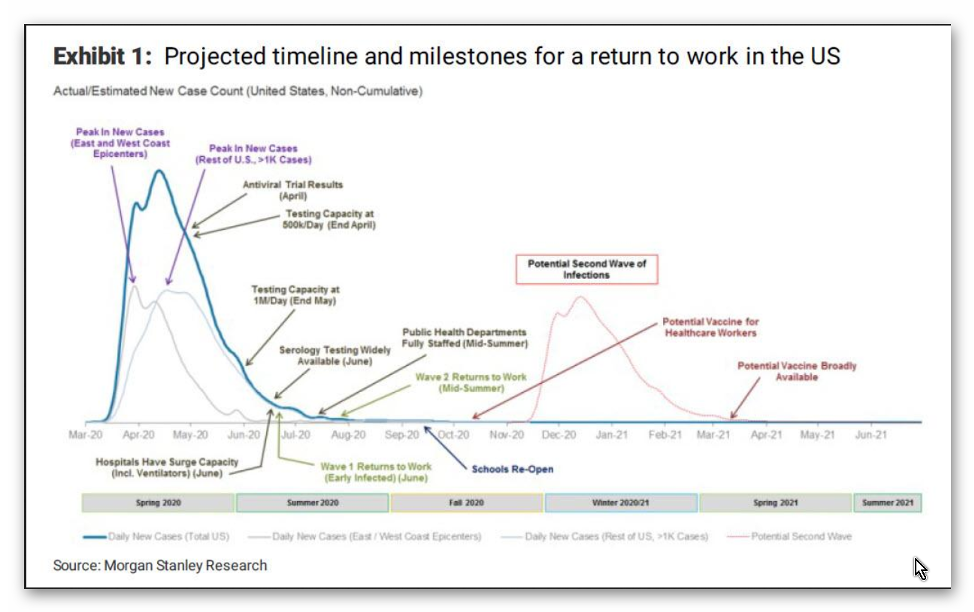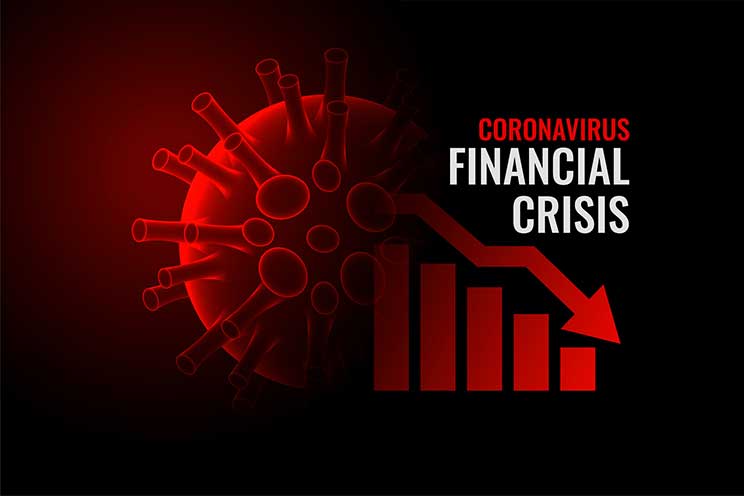Look at how quickly this has come about. Here’s an excerpt from the Massachusetts Institute of Technology’s (MIT) Medical Website dated February 28, 2020, only 45 days ago:
While there is still no identified risk to the MIT community, or to the US as a whole, we are closely monitoring the spread of COVID-19 cases outside of China. Fifty countries have reported at least one confirmed case of the virus, and a growing number of countries are reporting community spread, meaning cases with no relevant travel history or exposure to another known patient with COVID-19. Wednesday night, the Centers for Disease Control and Prevention (CDC) announced the first possible instance of community spread in the US but cautioned that, although the patient has no known exposure, it’s possible that the patient was unknowingly exposed to a returned traveler who was infected. medical.mit.edu/covid19-updates
day, April 14, in the US alone we have more than 580,000 confirmed cases and almost 25,000 deaths.
In the last few weeks as public health and government officials have furiously battled the virus, we have all been in limbo, trying to make sense of this new reality. Reacting to the many changes imposed on us while watching daily news conferences by our mayor, several governors and our president.
At this point we are all anxiously hoping for an unambiguous “all-clear” signal from our government health officials and our political leaders.
Guess what – we aren’t going to get the “all-clear” signal we want!
Not for a long time anyway. It may be another 12-18 months, mid-to late 2021, before health officials are comfortable releasing us to go back to “normal”. Even then it won’t be the “old normal”, but something different.
Covid-19 and our responses, Social Distancing and Stay-home protocols, have changed social behavior for at least the rest of this decade, maybe forever.We all know that our leaders (federal, state and local) are in the process of analyzing and then making critical decisions regarding both the fight against Covid-19 and the re-activation of our economy.
Our Government Leaders Dilemma
Do they continue the Social Distancing practices which will continue to reduce the spread of the virus?
Do they re-open, at least to some degree, our society so we can begin to re-energize the economy?
There are severe risks either way.
Ease up on Social Distancing too soon, the Covid-19 virus may re-emerge and many lives will be lost.
Wait too long to re-open the economy and we will have an extended depression. There are already 19 million new unemployed in the last 3 weeks and as much as 40% of US economic activity is halted. This is already a depression and if it goes on much longer many lives will be lost.
Note: many so-called experts are predicting that the “all-clear” will not really be sounded until we have a vaccine and “herd” immunity which is not likely before mid-to-late 2021.
Meanwhile, California’s governor unveiled a framework today for lifting the state’s stay-at-home order. The administration highlighted six key indicators for altering his stay-home mandate, including the ability to closely monitor and track potential cases, prevent infection of high-risk people, prepare hospitals to handle surges, develop therapeutics to meet demand, ensure schools, businesses and child-care facilities can support social distancing, and develop guidelines for when to ask Californians to stay home again if necessary.
Last week, the California’s secretary of Health and Human Services said easing the state’s restrictions would require putting in place a system to test more people for the virus, track new cases as they appear and trace person-to-person contacts that could trigger new outbreaks. “You only get an economic recovery if it comes on the back of a health recovery,” New Jersey Governor Phil Murphy said. “As painful as the economic reality is right now, it’s not remotely as painful as it would be if we get the sequencing wrong and we get the timing wrong.”
In a nutshell, optimists think this will allow us to reopen the economy soon. Pessimists counter that the main reason for the improvement is social distancing, which directly corresponds to reduced economic activity; if so, any economic rebound could result in a large second wave of infections, as well as renewed deterioration in the outlook for the death toll and healthcare overloads. Who is right?
According to Goldman Sachs, much of the improvement is probably a direct consequence of social distancing and the plunge in economic activity, and could reverse quickly if people just went back to work. But even if this means that a return to “business as usual” is off the table until we have a vaccine, it might be possible to bring back at least part of the lost output with a sharp increase in testing as well as more limited changes to business practices that lower the risk of infection. In particular, the manufacturing and construction sectors—which, by our estimates, account for about half of the total hit to GDP in April—might well be able to increase production from the depressed current levels quite soon.
In a note making the rounds on Monday, Morgan Stanley cautioned that many workers won’t be able to go back to their jobs “until a vaccine is abundantly available as social distancing cannot be fully relaxed until we have herd immunity”.

For at least the rest of this year we will hear lots of noise and be subjected to conflicting and frequently changing guidelines and orders. In many cases guidelines will be changed (relaxed) only to be reversed and re-imposed as another wave of cases appears.
As business owners we are going to have to operate in the new and confusing environment long before any definitive “all-clear” signal sounds.
Now with that perspective, how should we plan for the recovery of our businesses once things are “back to normal”?
STEPS TO TAKE NOW
First, we have to do everything we can to survive for the longest time possible. Cut costs, build cash reserves, defer all projects that are not immediately essential, borrow and draw down any credit lines you have available. Take care of your employees, but your priority must be to assure that your company can continue to be a viable employer in the future. Hopefully you’ve followed our prior guidance and already applied for the foregiveable PPP loans being offered by the SBA through your local banks.
Second, recognize that the timing of your return (and your customers return) to full operation is dependent on decisions being made by local and state health officials and influenced by the federal government. If your local health official decrees a continued lockdown, you must abide by it or risk fines, lawsuits from employees and customers and shaming by your neighbors.
Third, work like a beaver to make your company better, stronger and more healthy. There are many things you can be doing now. Here are some of the things we can help you with:
- Upgrading financial management with an outsourced CFO
- Improving cash flow
- Re-booting your salesforce
- Saving existing customers
- Improving operations
- Creating leads in the world after Covid-19
- Raising capital and growing faster
- Getting prepared to sell the next time the opportunity arises
These topics will be discussed in detail in future posts. We’ll talk both about what you can be doing and how we can help.
If you have any questions please call us at (800) 232-3584.
Be sure to subscribe to our blog to receive future posts and other important information.
